1. Requiem in D Minor, KV. 626: I. Introitus – Adagio
Composer: Wolfgang Amadeus Mozart
Artist(s): Rusquartet
2. Requiem in D Minor, KV. 626: II. Kyrie – Allegro
Composer: Wolfgang Amadeus Mozart
Artist(s): Rusquartet
3. Requiem in D Minor, KV. 626: III. Sequenz – Dies Irae Allegro assai
Composer: Wolfgang Amadeus Mozart
Artist(s): Rusquartet
4. Requiem in D Minor, KV. 626: III. Sequenz – Tuba Mirum Andante
Composer: Wolfgang Amadeus Mozart
Artist(s): Rusquartet
5. Requiem in D Minor, KV. 626: III. Sequenz – Rex Tremendae
Composer: Wolfgang Amadeus Mozart
Artist(s): Rusquartet
6. Requiem in D Minor, KV. 626: III. Sequenz – Recordare
Composer: Wolfgang Amadeus Mozart
Artist(s): Rusquartet
7. Requiem in D Minor, KV. 626: III. Sequenz – Confutaties Andante
Composer: Wolfgang Amadeus Mozart
Artist(s): Rusquartet
8. Requiem in D Minor, KV. 626: III. Sequenz – Lacrimosa
Composer: Wolfgang Amadeus Mozart
Artist(s): Rusquartet
9. Requiem in D Minor, KV. 626: IV. Offertorium – Domine Jesu Andante con moto
Composer: Wolfgang Amadeus Mozart
Artist(s): Rusquartet
10. Requiem in D Minor, KV. 626: IV. Offertorium – Hostias Andante
Composer: Wolfgang Amadeus Mozart
Artist(s): Rusquartet
11. Requiem in D Minor, KV. 626: V. Sanctus – Adagio
Composer: Wolfgang Amadeus Mozart
Artist(s): Rusquartet
12. Requiem in D Minor, KV. 626: VI. Benedictus – Andante
Composer: Wolfgang Amadeus Mozart
Artist(s): Rusquartet
13. Requiem in D Minor, KV. 626: VII. Agnus Dei
Composer: Wolfgang Amadeus Mozart
Artist(s): Rusquartet
14. Requiem in D Minor, KV. 626: VIII. Communio – Lux Aeterna
Composer: Wolfgang Amadeus Mozart
Artist(s): Rusquartet
15. Grande Sestetto Concertante after Sinfonia Concertante in E Flat Major, KV. 364: I. Allegro maestoso
Composer: Wolfgang Amadeus Mozart
Artist(s): Rusquartet
16. Grande Sestetto Concertante after Sinfonia Concertante in E Flat Major, KV. 364: II. Andante
Composer: Wolfgang Amadeus Mozart
Artist(s): Rusquartet
17. Grande Sestetto Concertante after Sinfonia Concertante in E Flat Major, KV. 364: III Presto
Composer: Wolfgang Amadeus Mozart
Artist(s): Rusquartet

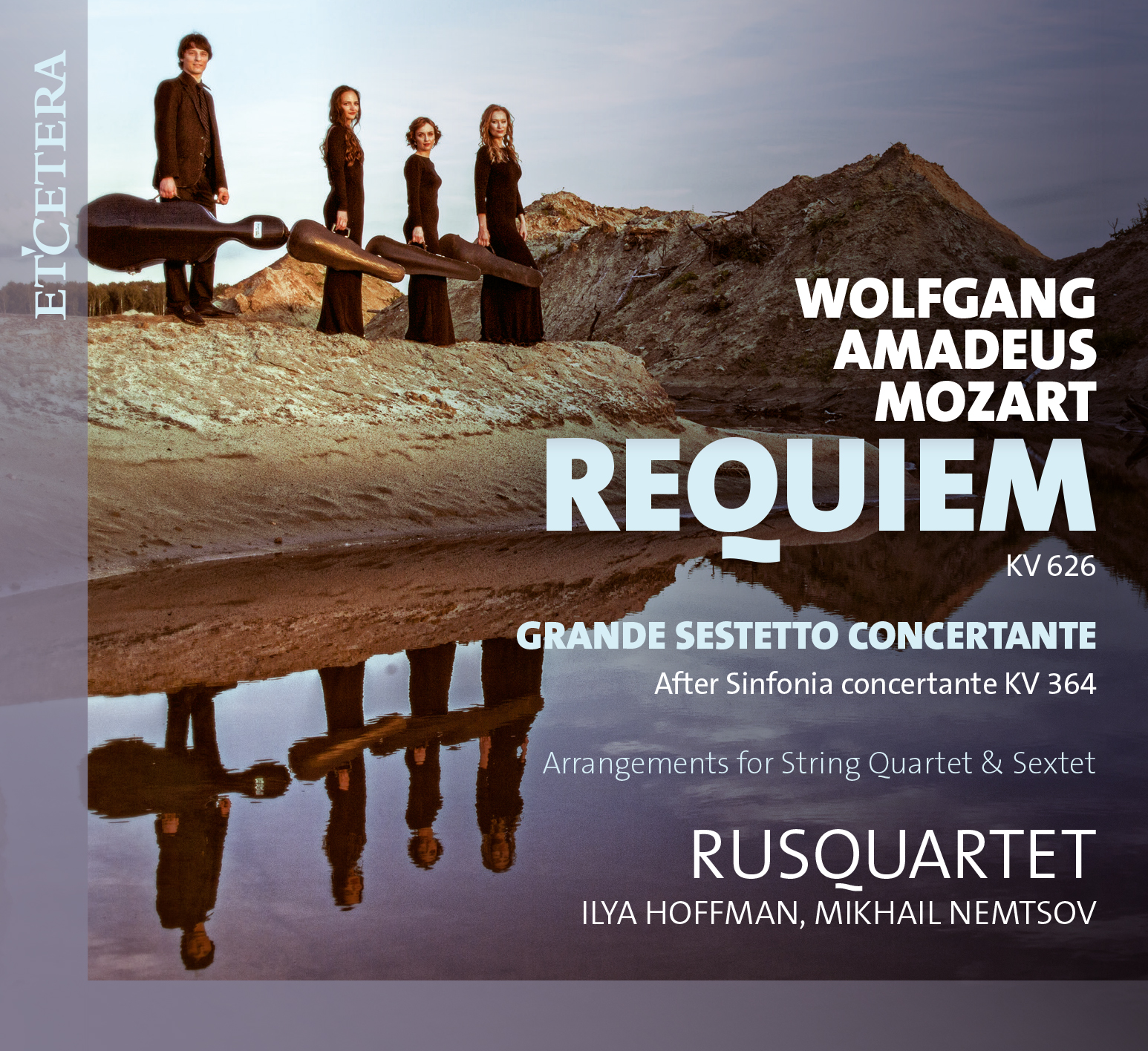
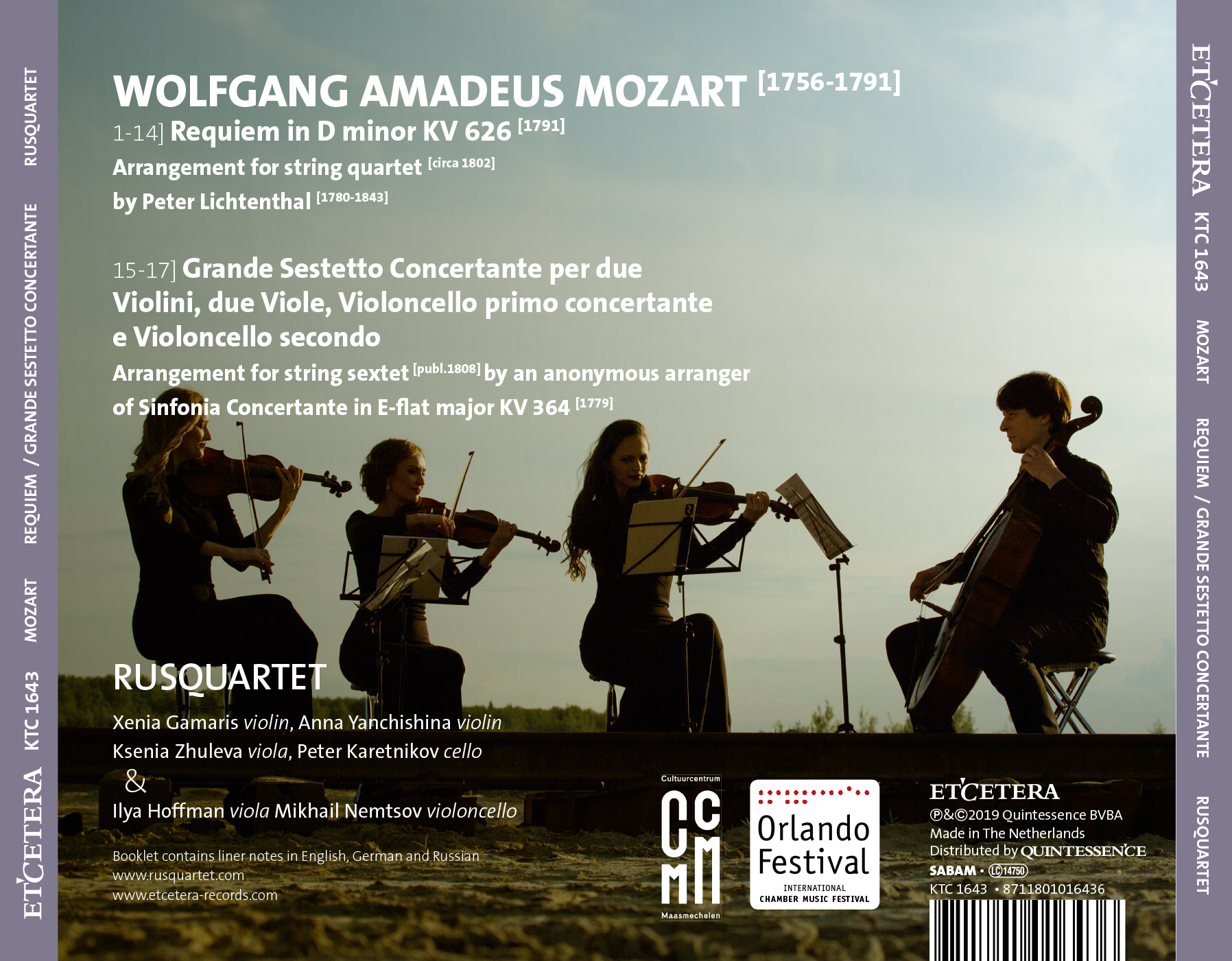

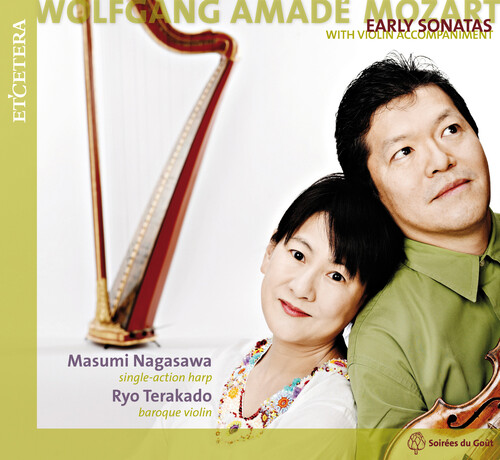
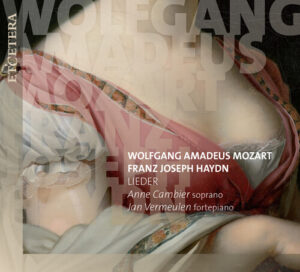
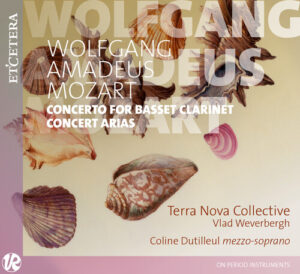


Reviews
There are no reviews yet.